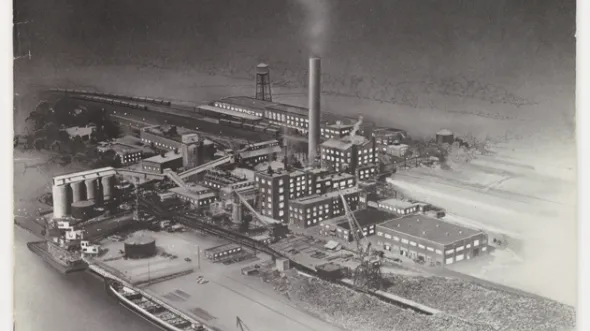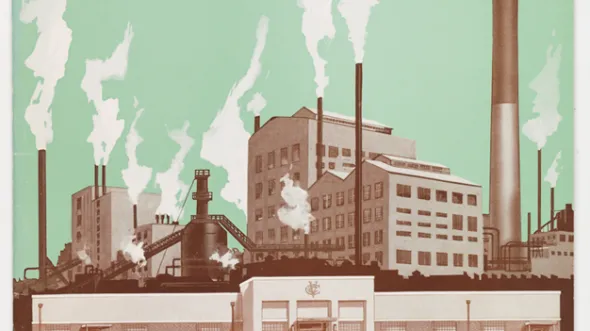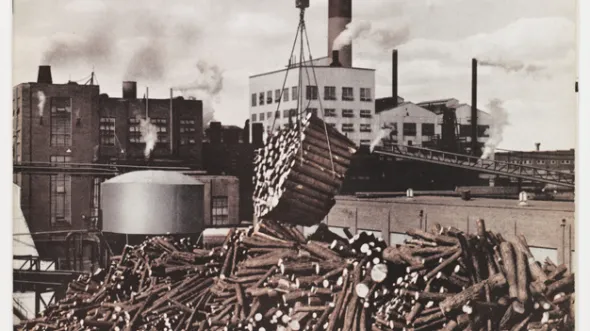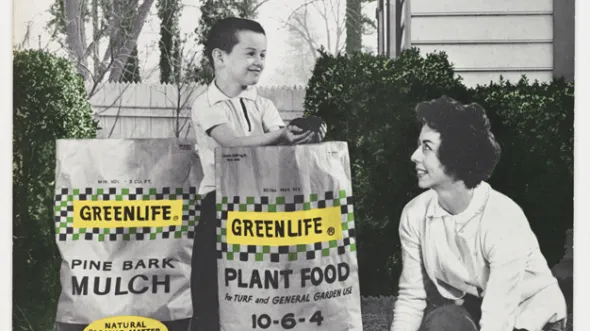Collections of business records arrive for safekeeping and preservation at the VMHC in a variety of ways. The most common means is through the family of the founders of the company. The Best Products Company, Lane Company, and Reynolds Metals records all ended up at the VMHC because the families who founded these companies, and fortunately still played a role in them, understood the importance of preserving the legacies of these businesses. We also often receive records for a company after it has entered bankruptcy or been sold to another company. Unfortunately, the potential for future litigation often leaves individuals hesitant about donating records. With no one willing to look through the large volume of records businesses produce to assess risk before donation, the collection often languishes in a warehouse, awaiting a day when it will be shredded.
Business Archives & The Chesapeake Corporation
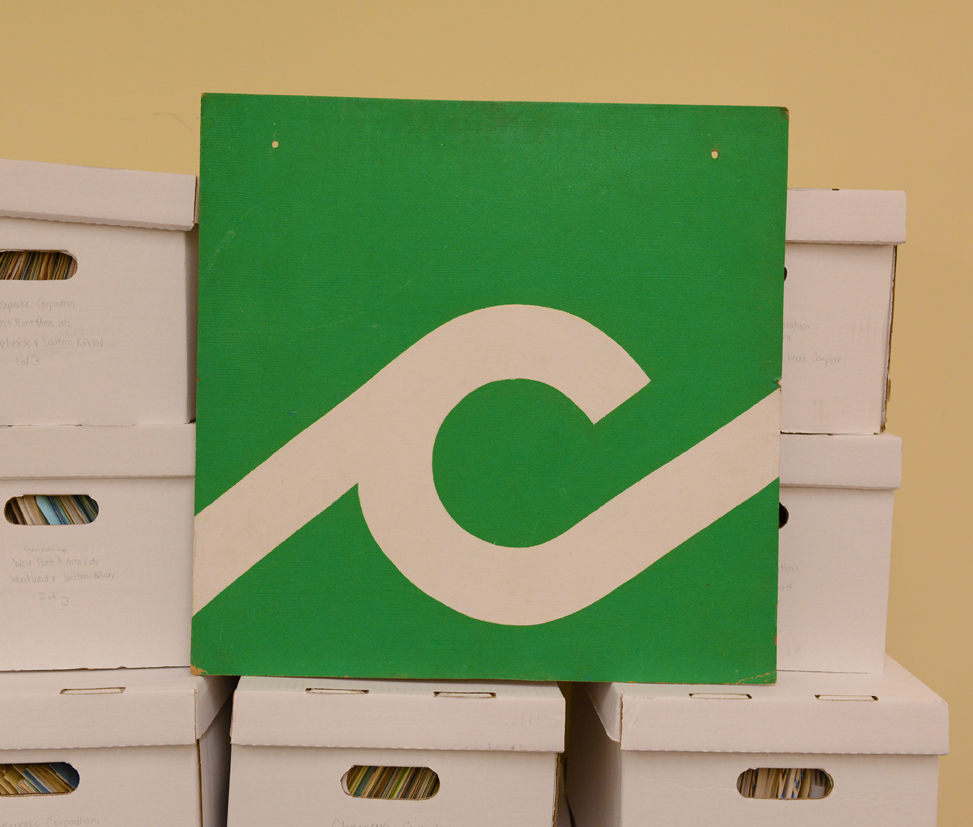
The Chesapeake Corporation started using this logo in the early 1960s.
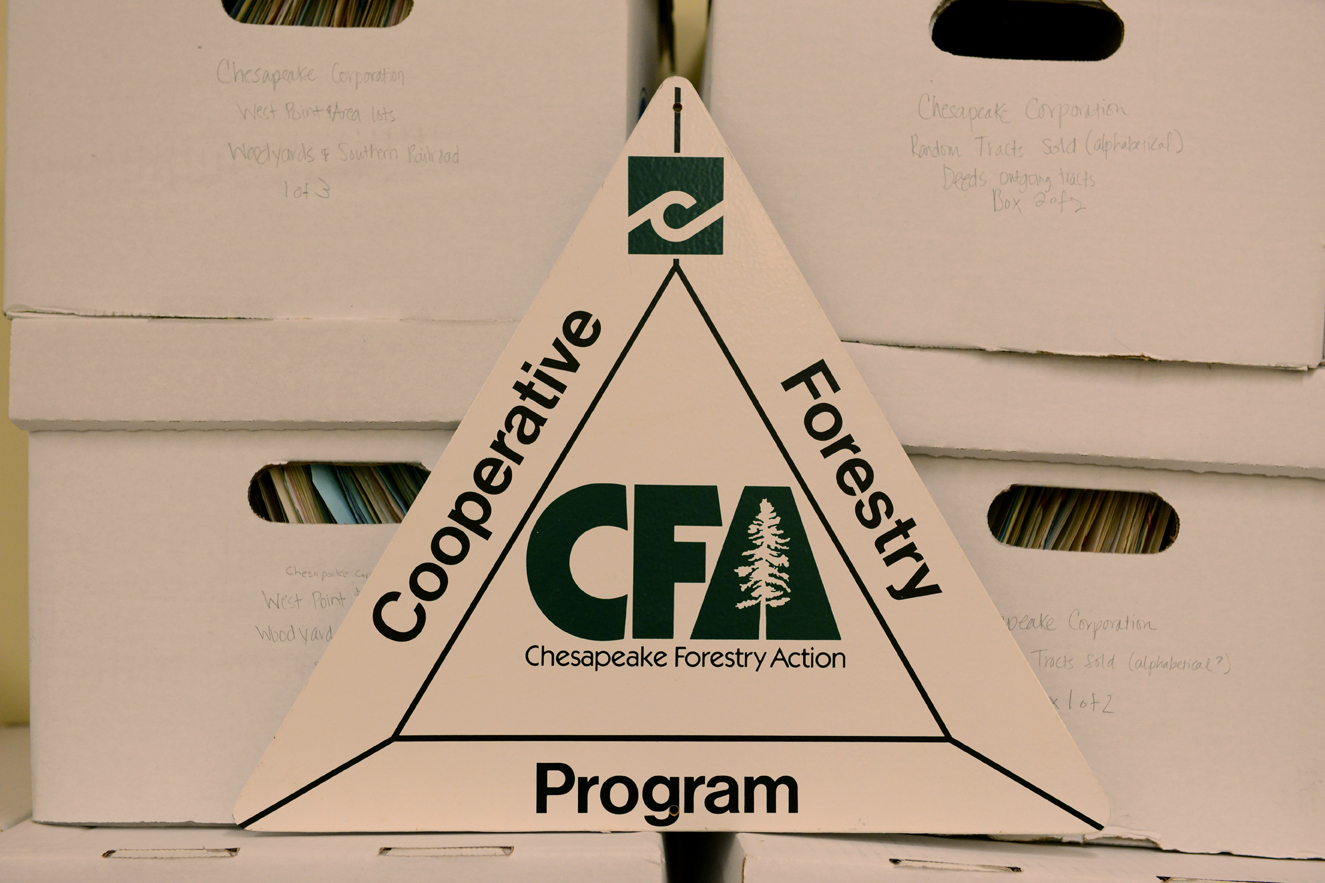
The Chesapeake Corporation used programs like this one to responsibly manage their forestry holdings.
The manner in which the records of the Chesapeake Corporation came to the VMHC varied from these more traditional models. This time, the chief legal counsel of the company reached out to see if we would be interested in receiving the company’s archives. John P. Causey, a historically minded lawyer and secretary of the Chesapeake Corporation, did his homework before donating the collection to the VMHC. He spoke to our staff about the donation and about how we would provide access to researchers, and he even came for a site visit before consenting to the donation. The business history archivists worked closely with Mr. Causey to organize the transfer of hundreds of boxes of records from West Point, Virginia, as well as from the company headquarters and a storage facility in Richmond. We’re extremely happy to have this large collection of records, which contains everything from board of directors’ minutes to real estate records that document forest density. When processing is complete, the collection will inform researchers about matters ranging from the growth of the paper industry to environmental issues. We anticipate that this collection will prove valuable to researchers in the future, and we applaud Mr. Causey and the Chesapeake Corporation for their decision to preserve these important records by donating them to the VMHC.
The Chesapeake Corporation Records are being processed through a generous grant from the Chesapeake Foundation and are included in the NHPRC project to process business collections at the Virginia Museum of History & Culture.
This article was written by Laura E. G. Stoner while serving as Assistant Archivist for Business Collections at the Virginia Museum of History & Culture.

